Urant USB-C PD 45W car
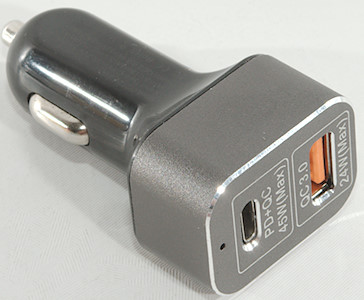
Official specifications:
- Input: DC 12V-24V
- Output Type C: 45W (5V/3A,7V/3A,9V/3A,12V/3A,15V/3A,20V/2.25A)
- Output QC 3.0: 24W (3.6V-12V/2A)
- Size: 65x35x25 mm
- Weight: 40g
- Color: Black
I got it from Aliexpress dealer: Jinser Ltd's store
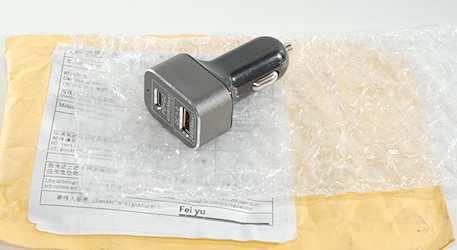
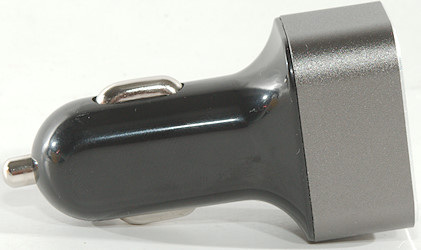
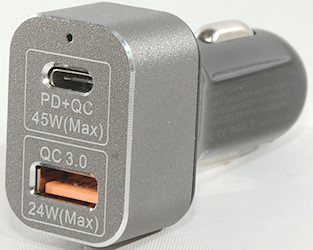
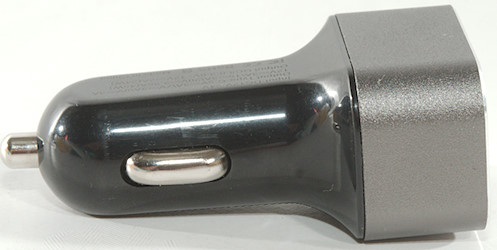
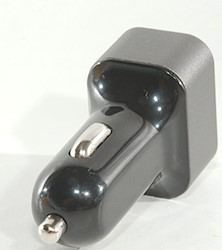
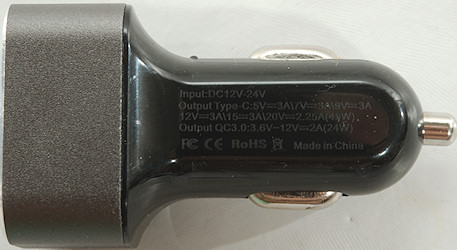
Measurements
- PD codes: 5V 2.39A, 9V 2.39A, 12V 2.31A, 15V 2.07A, 20V 2.07A This do not match the specifications
- PD outputs starts enabled.
- PD output is coded as Apple 2.1A and PE2.0 up to 20V, the marked QC is not present.
- QC output is auto detect with DCP, Apple 2.4, QC3, PE1.1, Huwai-DCP, Huwai-SCP, Samsung-FCP
- Minimum QC3 voltage is 3.6V
- Power consumption when idle is 28mA from 12V and 13mA from 24V
The charger has many different output voltages and with input support up to 24V this makes for many combinations, I have tested many of them, but will not show all here.
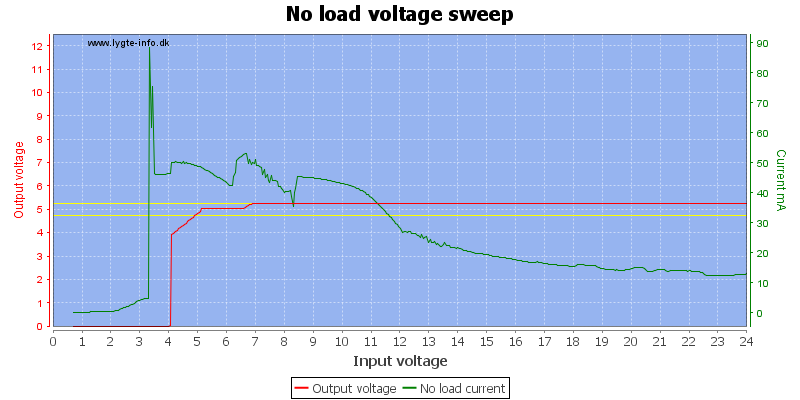
Power consumption when noting is connected to output depends on input voltage.
QC output
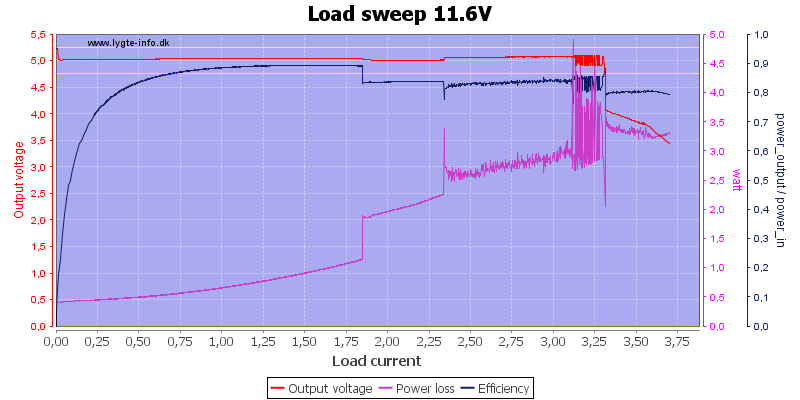
5V output with low input voltage, this looks good up to about 1.8A, the efficiency goes down, but it can deliver the rated 2A.
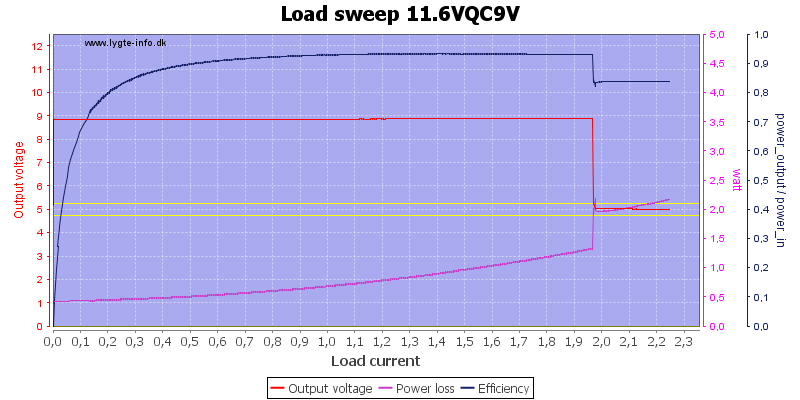
9V output, again with low input voltage, the output can nearly deliver the rated 2A.
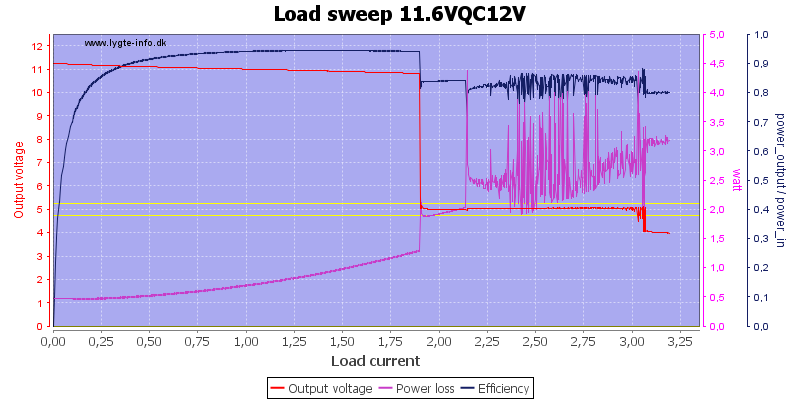
12V output with low input voltage is a bit problematic (This is the same on just about any car charger), it gets nearly up to 2A before it drops to 5V.
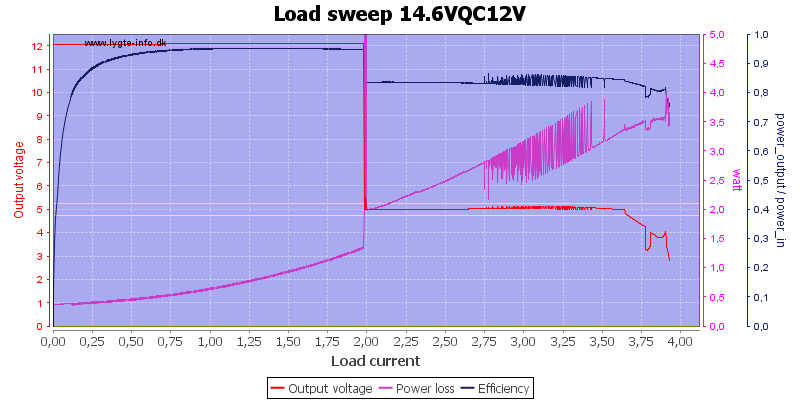
12V output with high input voltage can deliver exactly 2A
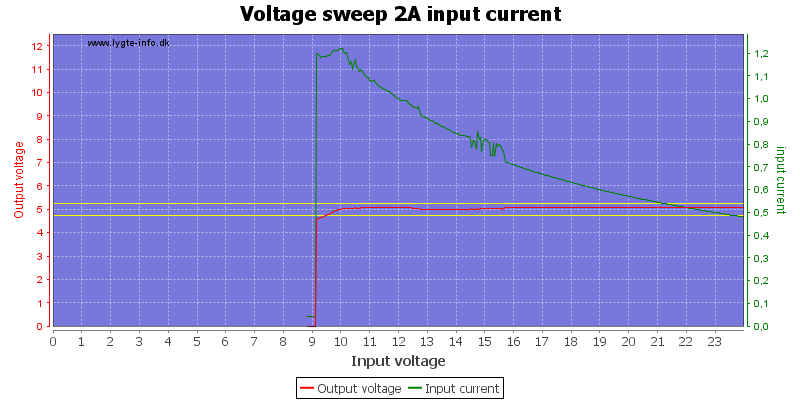
In these curves I sweep voltage from 24V and down with a output load of 2A, this one shows the input current with 5V output.
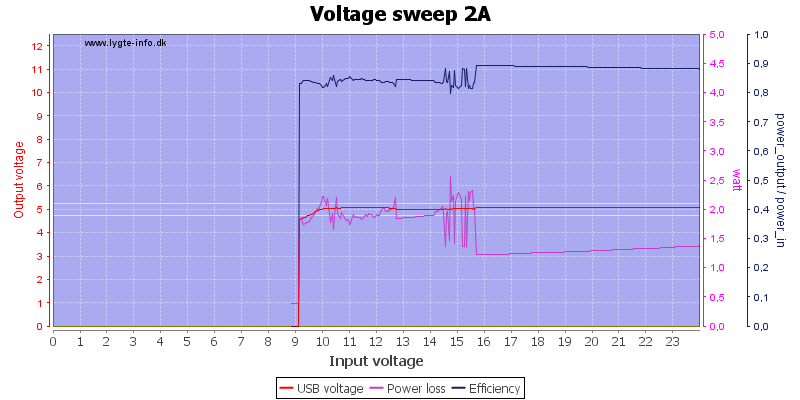
The 5V output is stable down to about 10V input.
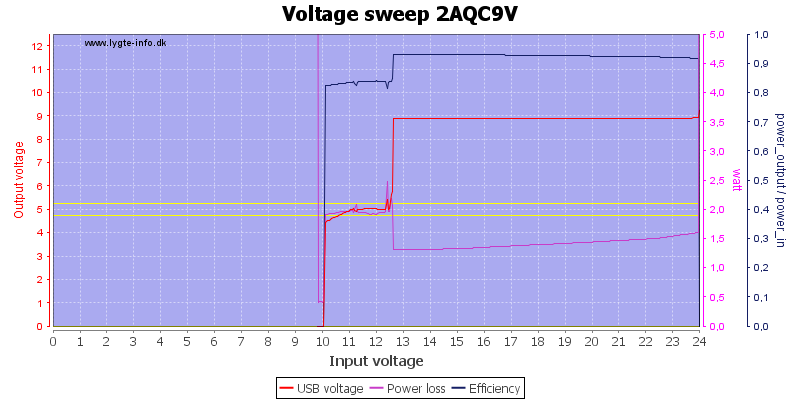
9V output can be maintained down to about 12.7V input, again with a 2A load
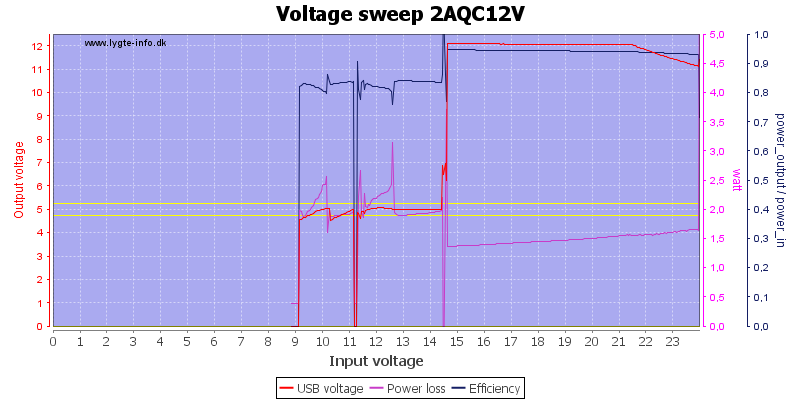
12V output works down to about 14.5V, also notice that the output is only 11V with 24V input.
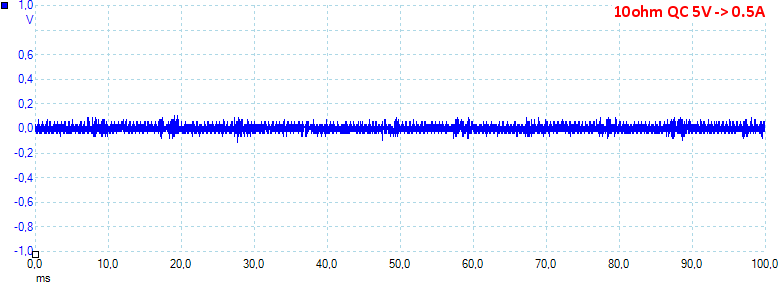
At 5V 0.5A the noise is 30mV rms and 278mVpp
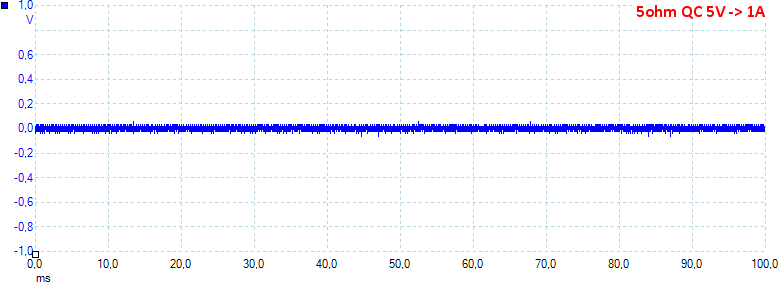
At 5V 1A the noise is 22mV rms and 110mVpp
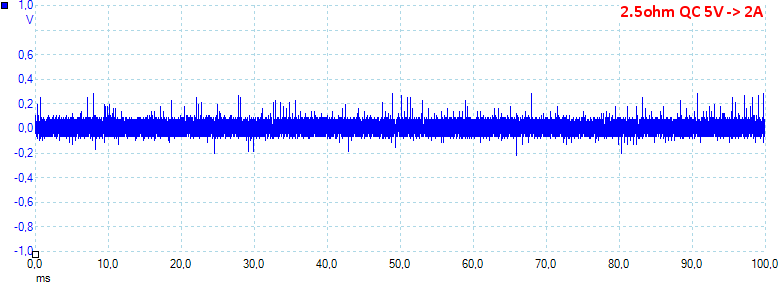
At 5V 2A the noise is 54mV rms and 547mVpp, this is a bit high.
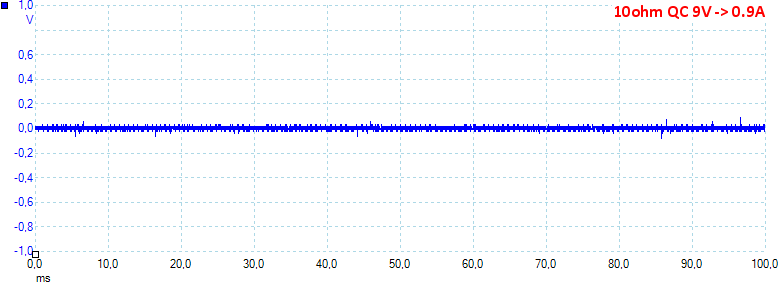
At 9V 0.9A the noise is 31mV rms and 264mVpp

At 12V 1.2A the noise is 116mV rms and 595mVpp, this is rather high, but it is also at the overload limit.
PD output
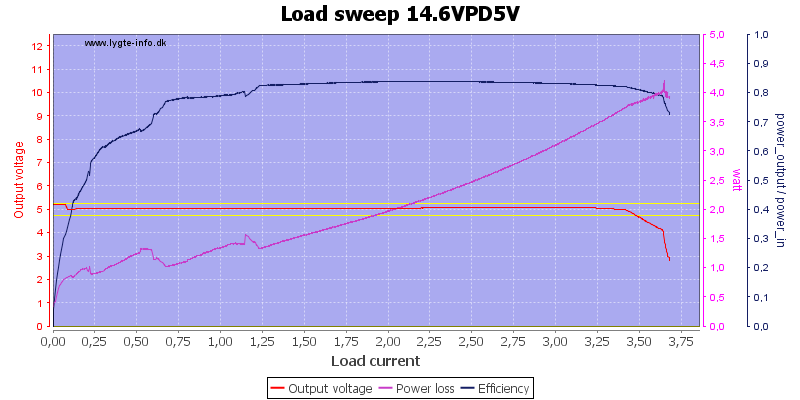
USB-C PD with 5V output and high input voltage can deliver about 3.5A, this easily matches both the specifications and coding. But the power loss is fairly high at higher current and may prevent the charger doing it for much time.
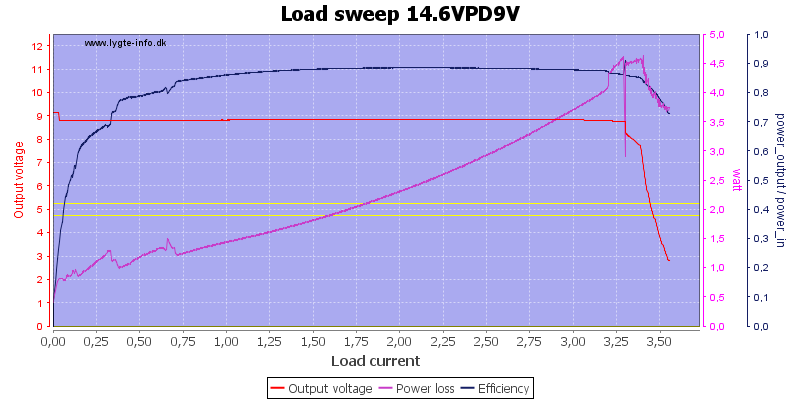
9V can easily match the coded current and more.

12V output with low input voltage, surprisingly the output current is much higher. The lower voltage is not as surprising.
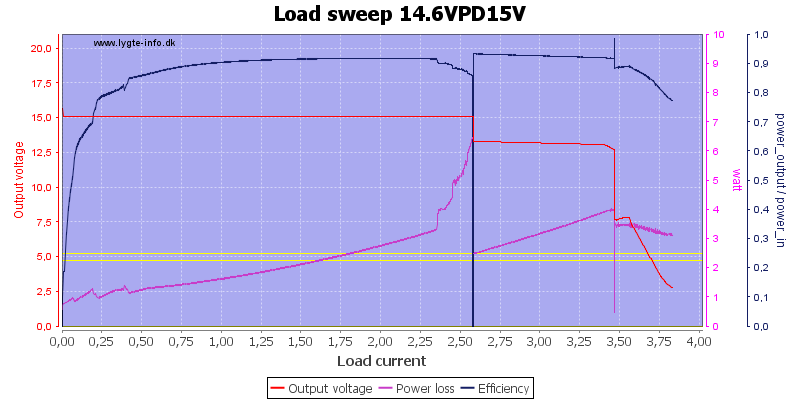
15V can deliver about 2.5A, before the voltage drops a bit and it then delivers 3.5A. The drop looks like the boost converter passes the input voltage, instead of boosting it.

20V is maximum output and it can deliver about 2.2A before the boost converter gives up.
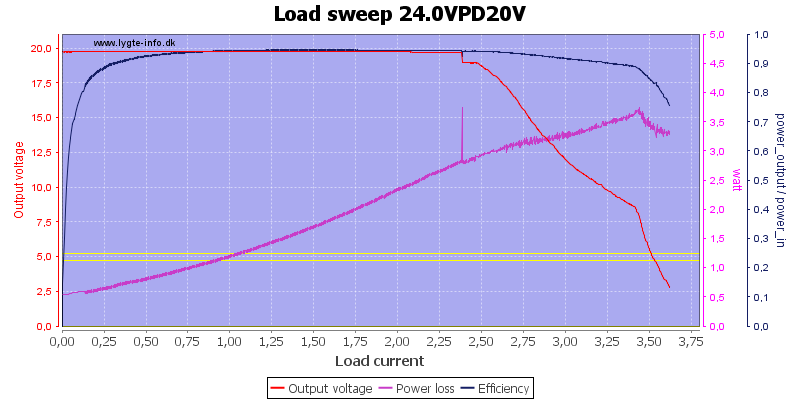
With 24V input only the buck converter is used and the output can deliver 2.4A, before slowly dropping.
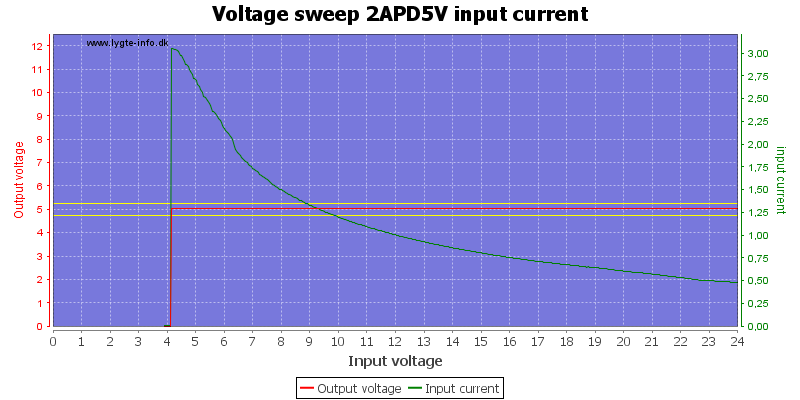
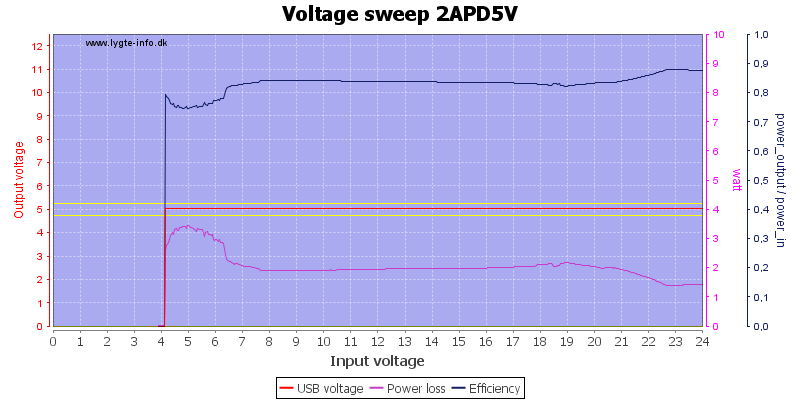
Due to the boost converter 5V output works down to about 4V input voltage.
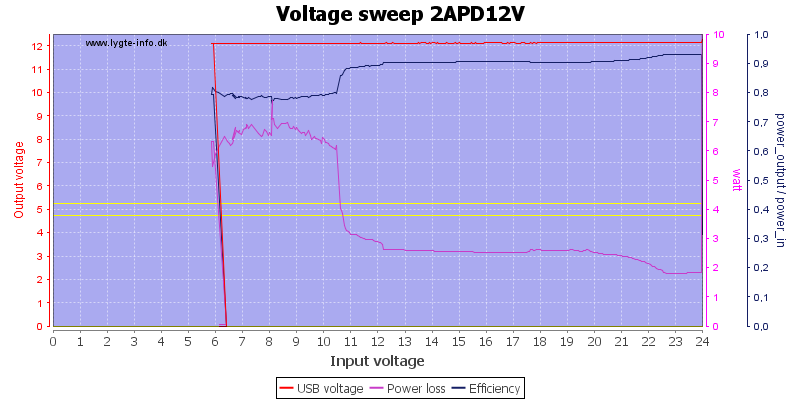
The 12V output works down to about 6V input, but the power loss in the adapter is rather high when using the boost converter.
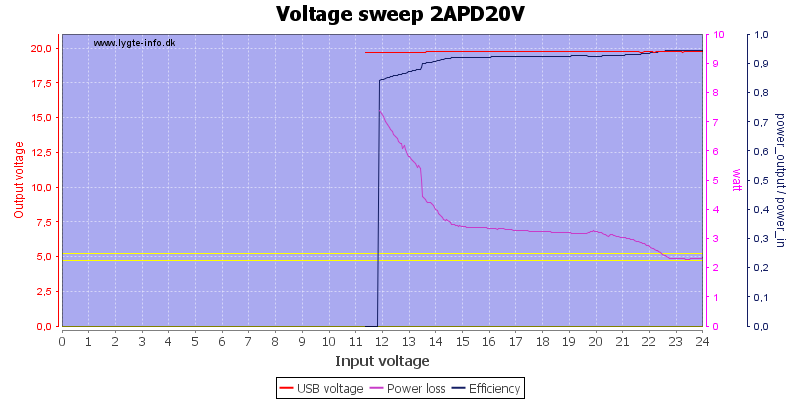
With 20V output the input voltage must be above 11.5V
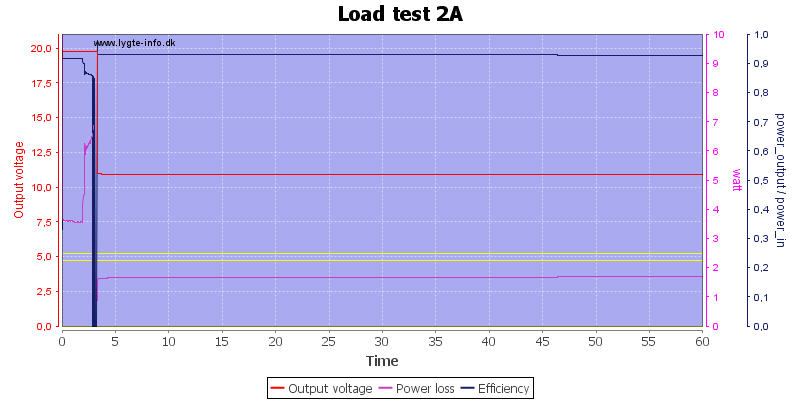
Using 12V input with 20V output is a bit hard on the adapter, because it has to use the boost converter. Here it could handle it for about 3 minutes. This is not going to charger a laptop or tablet computer.
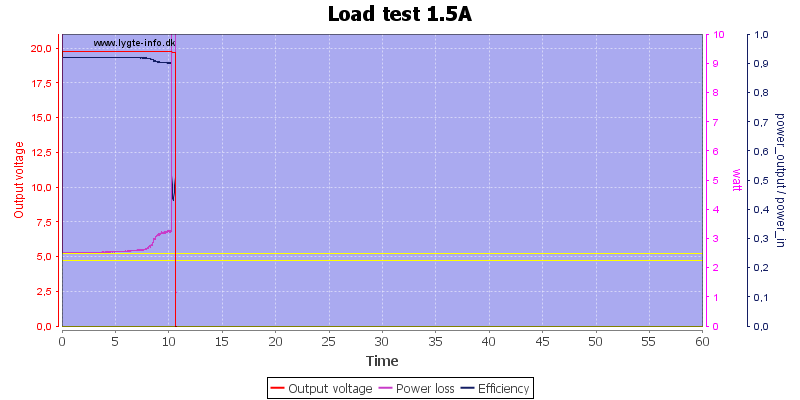
Reducing the load to 1.5A did increase the time to 10 minutes.
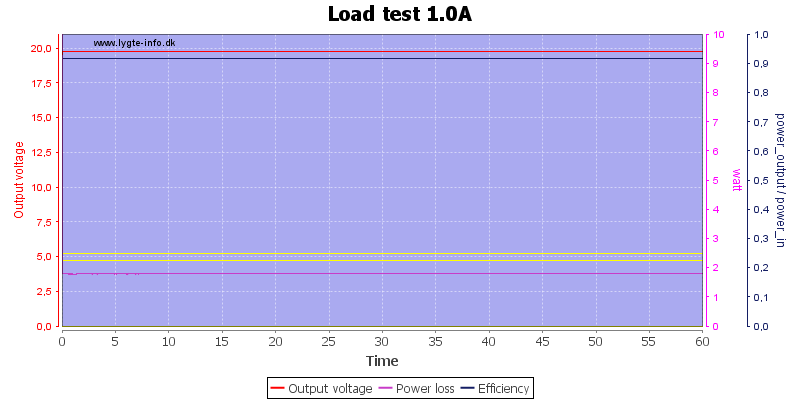
At 1A I could do a one hour test.
The temperature photo below are taken between 30 minutes and 60 minutes into the one hour test.
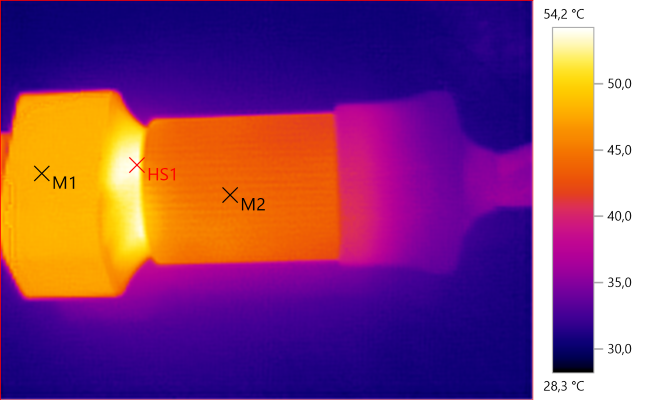
M1: 48.2°C, M2: 44.6°C, HS1: 54.2°C
The charger gets warm, but the temperature do not look problematic.
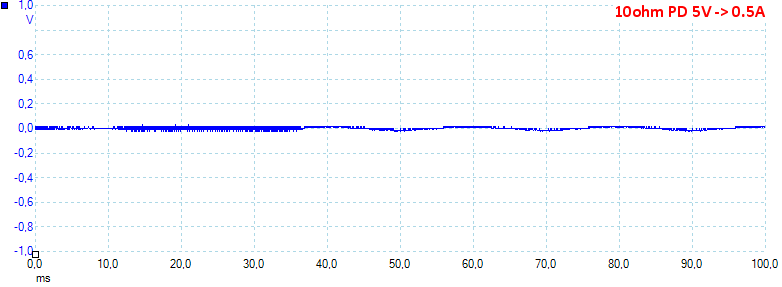
At 5V 0.5A the noise is 15mV rms and 99mVpp
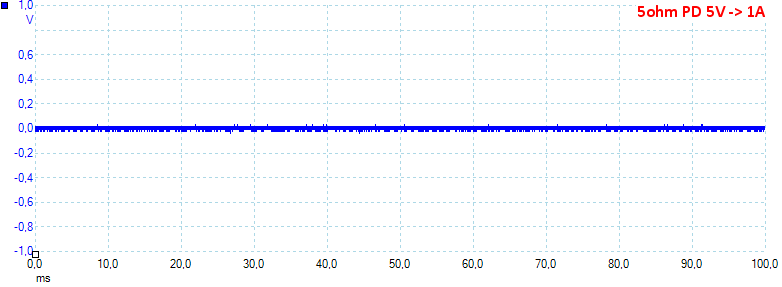
At 5V 1A the noise is 22mV rms and 110mVpp
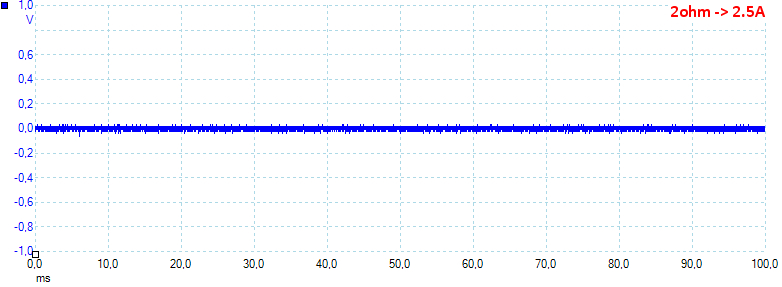
At 5V 2.5A the noise is 18mV rms and 145mVpp
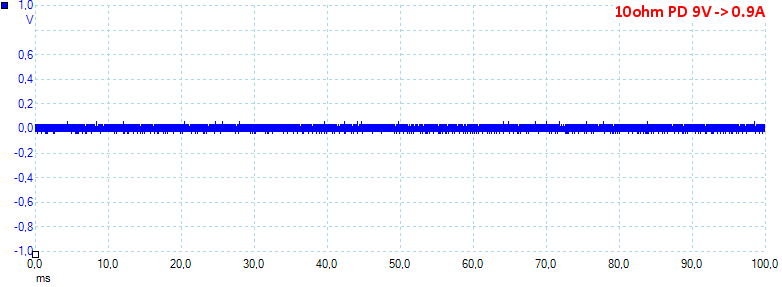
At 9V 0.9A the noise is 26mV rms and 170mVpp
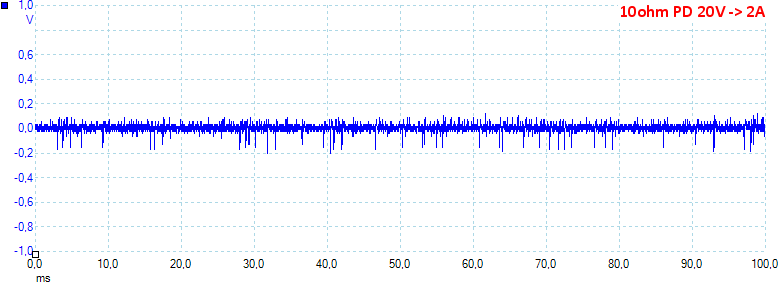
At 20V 2A the noise is 30mV rms and 414mVpp
Tear down
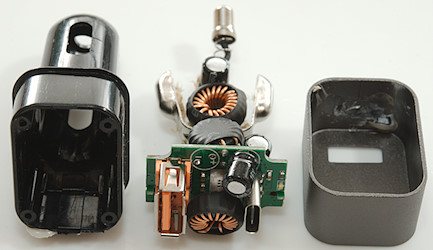
With a bit of force it was possible to pull the front of this charger.
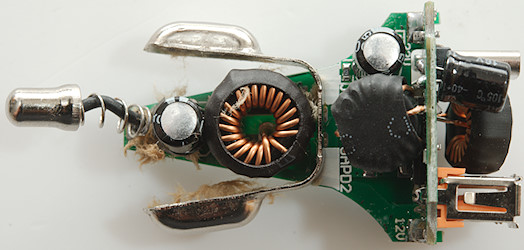
It has 3 inductors, the one on the "main" board boost the input voltage to 24V and the two on the usb board is for PD and QC respective.
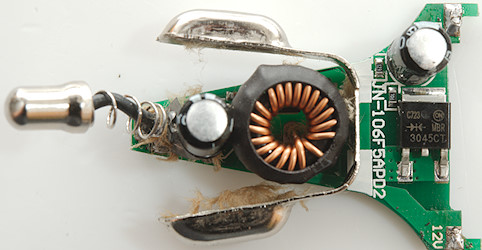
The boost converter uses a diode for rectification, that may be acceptable, the current is fairly low at 24V.
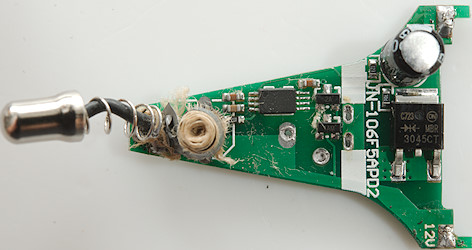
The boost converter chip is hidden below the inductor.
The "fluff" around the back of the adapter is because the input capacitor has vented (OOPS, not good).
The reason it vented is probably because it got too hot, this charger is supposed to handle very high power levels and with two converters in series there will be a lot of loss in it.
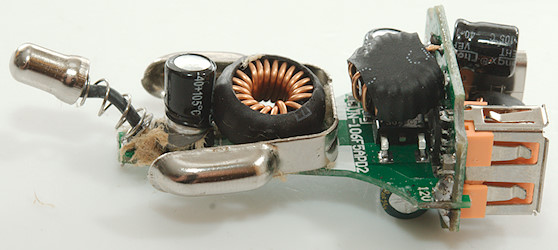
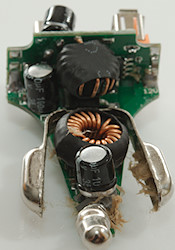
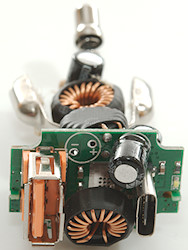
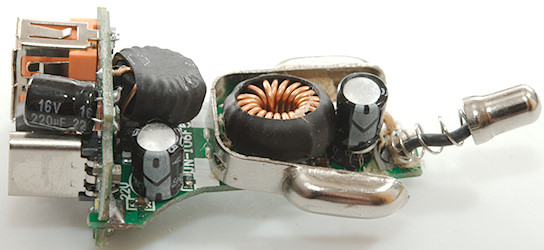

On the bottom is a power mos (AON6154) and a 9V regulator to supply the converter.
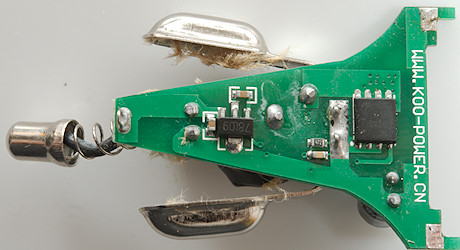
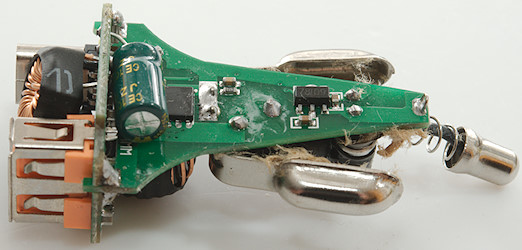
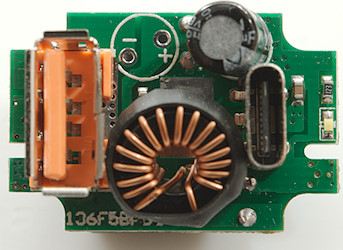
On this side is the two usb connectors, a led, a inductor, one capacitor, but there is space for two.

The two buck converter and usb interface chips are here. IP6518 is for PD, the other chip is for QC.
Being a 12V device there is no need to test with high voltages.
Conclusion
This car charger has a couple of issues, firstly the printed specifications is way overrated compared to the electronic reported specifications and any PD device will use the electronic reported value, sadly they are also overrated compared to what the charger can do.
During test the charger shorted its input at one time, the is no issue with a lab power supply, but in a car it will blow a fuse. Disconnecting the charger and reconnecting it fixed the problem.
The support for many different fast charge schemes is a nice detail.
I will only call it usable and keep any USB-C high speed charging tablets and laptops away from it.
Notes
Index of all tested USB power supplies/chargers
Read more about how I test USB power supplies/charger




















































